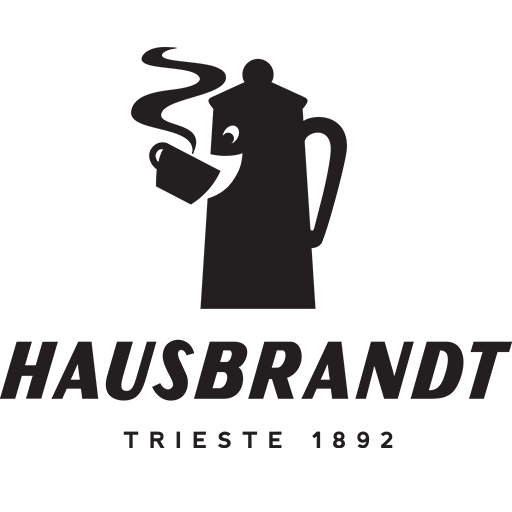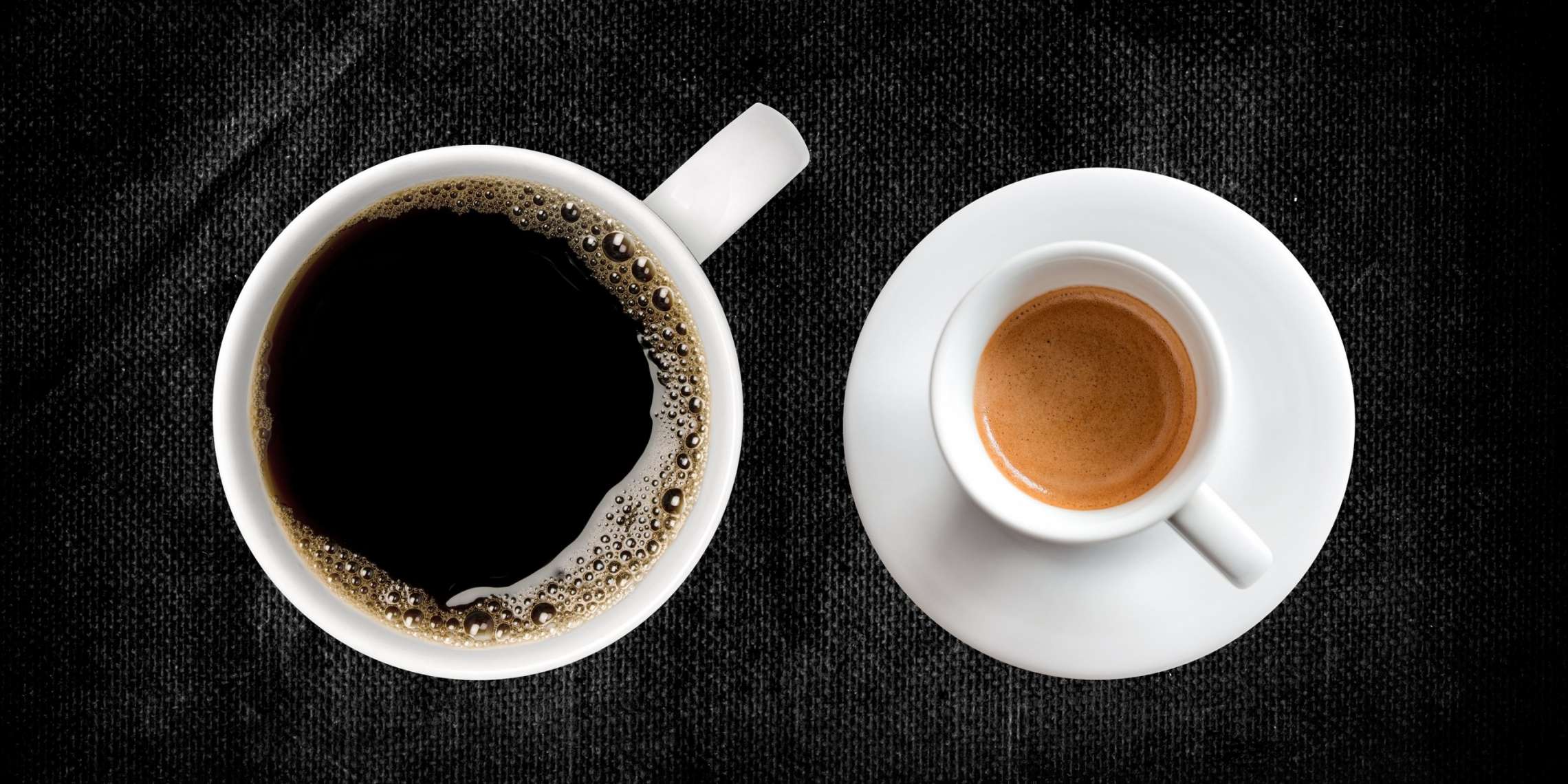What exactly is the difference between coffee and espresso?
For some, a tiny cup of strong espresso is the only true coffee, while others think it’s a bitter waste of perfectly good beans. Whichever you prefer, it’s always good to get our of your comfort zone and try something new!
To get you started, here’s a quick guide on what exactly is the difference between the two.
What Is Espresso?
Let’s start with basic definitions. Espresso is a method of preparing a cup of coffee that is tiny in size and violently strong in flavor.
The key distinction comes from how it is brewed.
Espresso is brewed by pushing hot water through the coffee grounds at an extremely high pressure and speed. This is why a special machine is required to make an espresso.

Espresso machines were first dreamed up by Italians in the late 19th century – a lot of scientific know-how was required to make it work.
In comparison, pour-overs are a much simpler method of brewing coffee. Technically, all you need is some water and coffee grounds to make magic happen. There have however, been major innovations in pour-overs as well, particularly from Japan.
Some people regard espresso as the “purest” coffee, while others prefer pour-overs for their more mellow and easy-drinking quality. In the end, it boils down to skill: a good barista will be able to make the most of any brewing method.
Espresso Vs Coffee Showdown: Who Has More Caffeine?
Alright, now let’s take a minute break down one of the classic misconceptions (or at least partial misconceptions) of espresso and coffee: caffeine content.
Chances are you were raised thinking that an espresso has WAY more caffeine than a cup of coffee. And, as you might expect from the above sentence, the correct response to that is both yes …and no.

See, if you take an equal amount of espresso and coffee, then yes, absolutely the espresso will have much more caffeine. But that should be no surprise, right? Especially since everyone and their mother knows that a tiny espresso shot is absolutely LOADED with all sorts of flavors and elements in a much more concentrated way than you get in coffee.
However, if you break things down on by a typical serving size, you’ll quickly find that a typical 8oz cuppa actually has quite a bit more caffeine than your average one to two oz shot of espresso.
Now, as is the case with most culinary facts, the specific numbers can vary quite a bit here depending on the beans you use, the brewing method, the temperature of the water, extraction time, and so on.
However, on average, a typical cup of coffee has between8oz and 100mg of caffeine. Some even put the higher end of the caffeine content up towards 700mg!

On the other hand, your typical shot of espresso is going to yield right around 60mg of caffeine, with the higher estimates usually still being below that 80 mg lower threshold for a cup of the brewed stuff.
All of that to say, espresso and brewed coffee have different amounts of caffeine, but both have “more” than the other depending on how you’re looking at it. You can see a thorough breakdown of the caffeine concentration in some brewing methods here!
The Difference Is In The Brewing Method
All coffee comes from the same source, the Coffea plant. There is no real difference between “espresso beans” and other coffee beans. Rather than the beans themselves, the difference between coffee and espresso derives from the way they are processed and brewed.

Roasting
When coffee beans are harvested, they are pale green, and unfit for brewing. They need to be roasted to bring out their best qualities. For a fascinating look at what happens when coffee beans are roasted, see this:
Espresso beans are roasted until very dark, because this increases their capacity to withstand the high pressure under which they are brewed. A dark roast also brings out a full body with low acidity, and is well suited for drinking with milk.
Simply put, most roasters and consumers seem to prefer espresso to be roasted a little darker when it is to be consumed in milk rather than black.
Lighter roasts are especially well suited for pour-overs, which tend to bring out the brighter, fruitier flavors of the coffee. But it all boils down to your personal preferences. So get out there and experiment with some different beans!
Grinding

Espresso is probably the most unforgiving method of preparing coffee. There’s a lot of science involved: you are working with a very high pressure and a time limit of about 30 seconds. Within these limits, even the smallest changes will have a significant impact on your cup.
Grind size that is too fine will lead to bitter, over-extracted espresso, while coarse grounds will produce an acrid, under-extracted cup. The grind size for espresso should be fine, between flour and table salt. For pour-overs, the grind size is usually more coarse. Because grind size is so important, for good espresso, you need a good grinder.
While hand grinders like Hario Skerton are convenient for grinding some beans for a pour over, they struggle to produce a grind size that is fine and even enough for espresso. To get that perfect espresso grind, you’ll need to invest in a decent machine grinder like the Baratza Virtuoso.
Brewing
This is the most striking difference between the two lies, for which the previous steps have been just preparation.
While filter coffee can be produced in various different ways using a similar core principle, espresso needs to be made using an espresso machine.

An espresso machine uses about 9 bars of pressure to push heated water through coffee grounds within 20-30 seconds. There’s a lot of engineering involved, with every single detail being important for the resulting cup.
Espresso machines can be automatic, semi-automatic, or manual. Many espresso machines these days are automatic to a large degree, so baristas don’t need to understand all the fine details of their tool.
If you’re curious, here’s an elaborate look at the workings of the espresso machine:
Final Thoughts
The difference is in how you make it. To recap, espresso is an Italian-style coffee brewed with high pressure and speed. You need an evenly fine grind size and a special machine to make a good espresso. In comparison, other types of coffee are usually made by slowly filtering water through coffee grounds.
So, espresso vs coffee – it’s not a competition! Some coffee aficionados swear espresso is the truest form of coffee, while others prefer smooth and vivacious pour-overs. In the end, it’s mostly about the skill of the barista and the quality of the beans.



